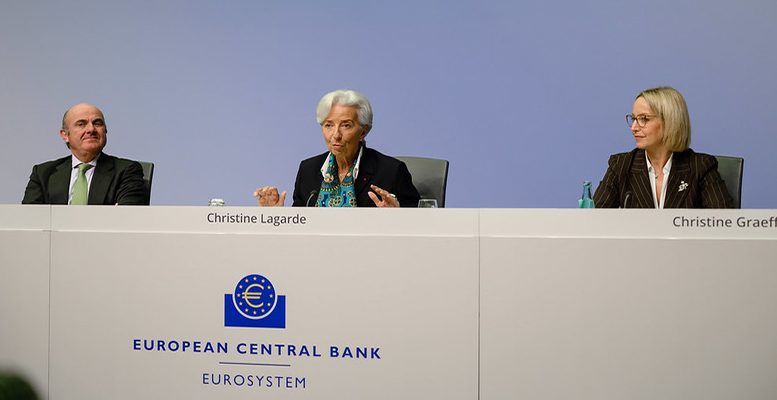Annalisa Piazza, Fixed Income Research Analyst, MFS Investment Management | The ECB has left its policy stance unchanged after today’s GC meeting. The tone of the press conference was a touch less dovish than expected and President Lagarde has not signaled any large swing in policy in the near term. The overall message was clear: the ECB is monitoring current developments (including the EUR) and assessing the efficiency of the current policy measures before acting with more accommodation
As for the policy stance, no changes were delivered. As such, the current package consists of:
- Deposit rates were left unchanged at -0.5% and forward guidance was also muted.
- PEPP envelope has been confirmed at EUR 1.35bn to run until June 2021 and reinvestments to run until Dec 2022. Flexibility of PEPP also confirmed
- APP to continue to run at current pace of EUR, along with the additional EUR 120bn additional envelope until the end of the year. Forward guidance on QE also remained unchanged.
- Liquidity will continue to be injected through its refinancing operations.
The ECB was widely expected to leave the current accommodative policy stance unchanged despite some volatility in recent data (ie falling inflation) and the strengthening of the EUR. Any change (in one direction or the other) would be premature during the uncertainties surrounding the economic outlook and still fragile (despite the improvement) of financial conditions.
The September ECB projections have not changed in a meaningful manner. Indeed, GDP for 2020 was revised up (-8% from -8.7%) on the back of recent solid data and 2021 and 2022 were broadly unchanged. If anything, the inflation profile was surprisingly unchanged for 2020 (despite the large fall in August) and 2021 inflation was revised a touch higher. The inflation scenario remains depressed and the ECB remains ready to deploy all possible tools to support a return to pre-Covid trend. In such a context, recent developments of the EUR have been mentioned in the Introductory statement and Lagarde referred to the currency as one of the factor that the ECB will be monitoring in the future. Nevertheless, the ECB made clear that the EUR is not one of their targets. As it has often happened in the past, the ECB is reluctant to set a target or implement any clear measure to reduce the rapid acceleration on the EUR, mainly because it is not part of its objectives. We expect the ECB to continue to ‘talk down’ the EUR and reduce further volatility (if any) in the future but we don’t anticipate any additional accommodation (ie another rate cut) aimed at weakening the currency. The negative consequences of a rate cut (on banks’ profitability) could possibly more than offset the positive impact on the EUR.
What about PEPP?
The ECB seems to be relatively confident that the current programme is achieving – at least partially – its objectives. Indeed, Lagarde highlighted how current financial conditions, level of spreads and fragmentation risks are back to pre-Covid levels. On that respect, additional PEPP towards the end of the year should not be needed if current market conditions remain muted. On the other hand, inflation remains extremely low and the ECB will have to re-assess the economic scenario later on when there will be more clarity around some of the downside risks (ie second wave) and deflationary risks. At the current juncture, the ECB actually see reduced deflationary risks vs June despite the fall of headline inflation in negative territory in August. Lagarde also dismissed the idea that rising supply related to expansionary fiscal measures would automatically justify an additional PEPP envelope in 2021. If anything, the ECB continues to welcome recent fiscal measures (both domestic and at EU Level) as they are seen as the necessary instrument to support growth and price stability in the medium term. No expansion of PEPP has been discussed at this meeting and we would expect a similar attitude in the coming months, unless there is any massive change in the economy scenario.
Bottom line, the ECB is ‘Monitoring’ but not targeting the EUR and doesn’t seem to be in a rush to increase the current accommodation package.
Markets have corrected part of the morning gains after today’s decision
as they partially priced out the probability of a cut and additional QE
in the near term. The EUR has regained some strength, more reflecting
the recent trend that had been temporarily curbed by some more dovish
comments by ECB members ahead of the GC meeting.
We still see
good chances that the ECB will expand its PEPP programme late this year
(or in early 2021) when the ECB projections will go out to 2023 (and
possibly show still subdued inflation) and the temporary increase in the
APP programme expires. Alternatively, the ECB could expand its regular
APP programme should the impact of the pandemic be less severe but the
inflation profile should still not be satisfactory.





